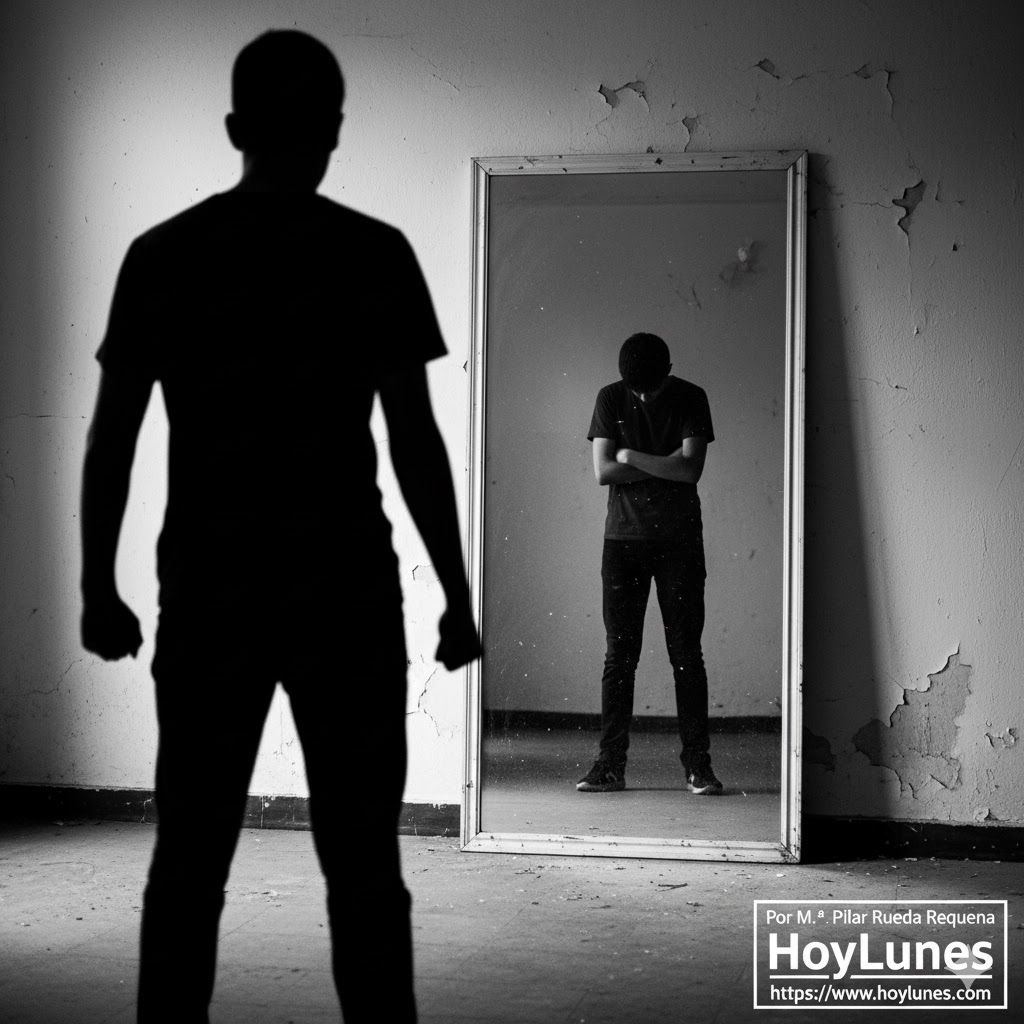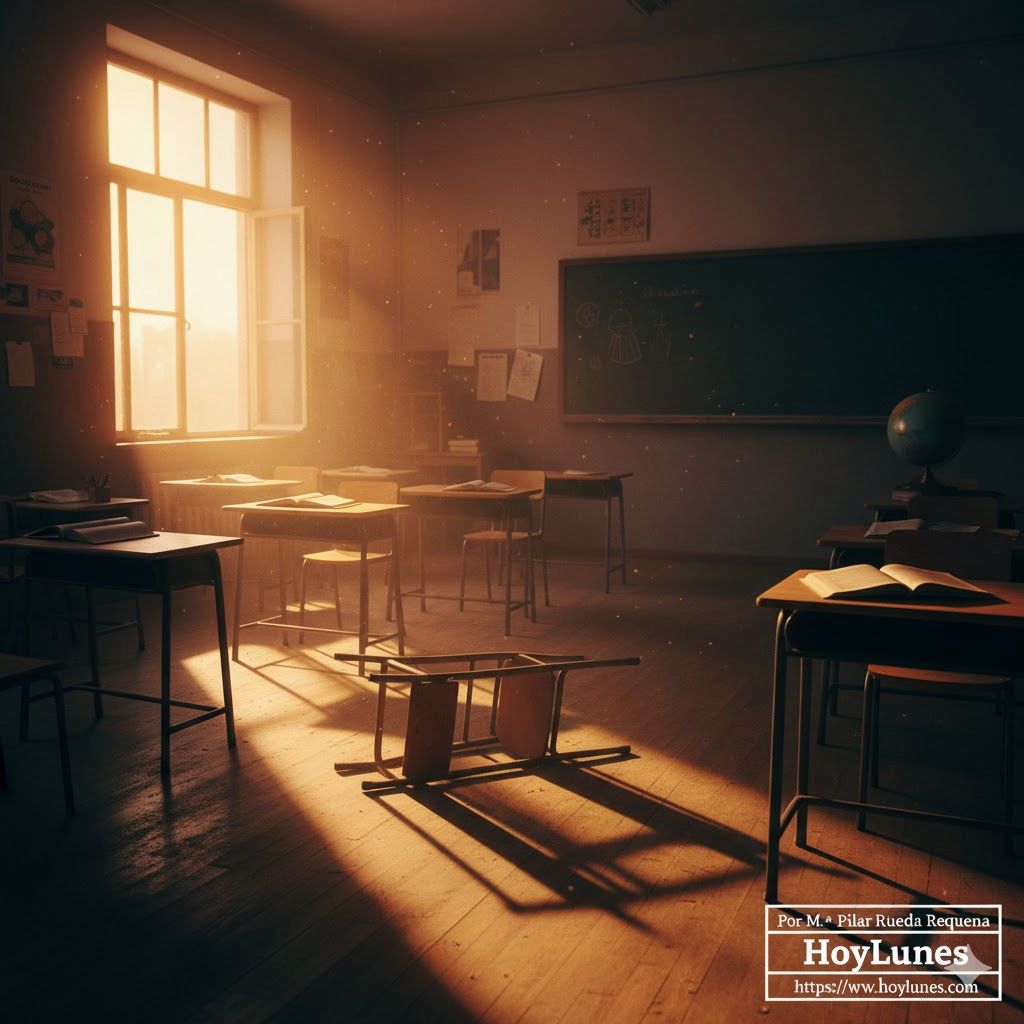Spain awakens to a silent wound that cuts through classrooms, homes, and screens. It is not enough to protect; we must understand, heal, and educate from the root. Changing the focus is not looking away—it is looking deeper.
By M.ª Pilar Rueda Requena
HoyLunes – Although we have long been hearing—though not truly listening—about cases of school bullying, it has only been in recent weeks, following the tragic suicide of a young girl and then another similar case, that we have truly felt the outcry, the fear, and the urgent collective need to shout “Enough!” as a cry from society as a whole.
But… do we really know what we are facing? What causes such behavior in those who inflict so much suffering on other children and their families?
It is a form of peer violence—intentional, repeated, and prolonged over time. It can manifest physically, verbally, or psychologically, with the intent to harm, to instill fear, or to exclude.
Faced with this, we must ask ourselves why someone might derive pleasure from another’s suffering to such an extent.
The profile of aggressors may vary: from dominant or aggressive personalities to young people with low self-esteem who seek external validation. They look for attention through violence and often act out of insecurity. In many cases, they reproduce behaviors they observe in their family or social environments.
Ultimately, it is the ego that drives their behavior—whether through fear, pride, frustration, or arrogance—projecting outward an inner distress they do not know how to manage.
To these multiple factors we must add the anxiety caused by the uncertainty of the future, marked by climate change, insecurity, and fear spread through media and social networks. Adolescents, still in the midst of emotional development, often lack the tools to properly filter or interpret these messages.
On the other hand, adolescents who suffer the impact of bullying tend to share certain characteristics, though expressed differently: low self-confidence, shyness, or withdrawal, all of which increase their vulnerability. However, they may also possess talents or qualities—such as beauty, intelligence, or social skills—that awaken envy or resentment in the aggressor, precisely because they embody what the aggressor lacks.

A New Perspective on Bullying
This is where I want to focus: we need to change our perspective and direct attention not only to those who suffer harm but also to those who inflict it.
For years, anti-bullying policies have focused on protecting the victim, but this unilateral protection, while necessary, can have a counterproductive effect: it reinforces their fear and sense of helplessness.
Meanwhile, the aggressor perceives such measures as a victory, feeling that they have achieved their goal: to harm and to draw attention.
Shifting the focus means going beyond punishment. We must act with balance and depth: addressing aggressive behavior but also its emotional and familial roots.
Physically separating the aggressor from the victim may be a temporary measure, but it is not enough. Expelling them from the school may even feel like liberation, not correction.
For this reason, it would be far more effective to replace punishment with therapeutic programs that help the young person recognize their emotions, identify the cause of their anger or frustration, and learn to channel it—with the involvement of their family. Only then can real and lasting change be built.
We must change our perspective to heal and educate. Those who suffer aggression, I prefer to call them heroes or heroines, not victims. The word victim is weakening—it evokes passivity and pain:
VICTIM: weakness, passivity, a person destined for sacrifice (according to the RAE).
HEROINE: by contrast, implies bravery, strength, courage, and the capacity to confront and overcome adversity.
When someone suffering from bullying understands that the aggressor acts from insecurity or low self-esteem, their perspective changes. If the aggressor desires what the other possesses—intelligence, beauty, resilience, or social acceptance—understanding that lack in others strengthens the self-esteem of the person who is attacked.
Thus, they cease to feel like a victim and become the protagonist of their own life, as I recount in my book “My Life with Wings of Colors”.

An Example That Transforms: The Club of the Brave
A good example of how changing the focus can prevent bullying is The Club of the Brave, an initiative that teaches children, from primary school onward, to identify bullying behaviors and act with empathy and courage.
The process is simple and educational:
When a boy or girl experiences aggression, their first step is to set a clear boundary: “Stop, don’t continue, I don’t like it.” If the aggressor does not stop, the victim or any classmate who witnessed the incident informs a teacher, who must respond with openness and protection.
In this approach, there is no fear or silence, but courage and recognition as celebrated values.
Once the facts are verified, the aggressor receives an immediate consequence: one day without participating in games—unless the class group decides to grant a second chance.
The collective decision promotes reflection and empathy. If the class decides against reintegration, the student serves their sanction under the teacher’s guidance to encourage personal reflection.
Even if other students outside the group inquire about what happened, it is the classmates themselves who explain, avoiding rumors and reinforcing shared responsibility.
The main lesson is clear: courage in speaking out, solidarity among peers, and empathy for others are what truly deserve recognition. In this way, the circles of silence and complicity that feed bullying are broken.

Anti-bullying prevention plans in schools are essential and must involve the entire educational community: teachers, families, and students.
However, once aggression has occurred, it is also necessary to act on the aggressor, with formative and restorative measures.
The child who attacks must understand that their actions have real consequences, and the one who has been harmed must feel heard, supported, and surrounded by solidarity.
If we limit ourselves only to protection, without addressing the root of the problem, the victim remains isolated and the aggressor validated.
In both bullying and gender-based violence, the focus of intervention often falls on the one who suffers, while the aggressor remains unpunished until the harm becomes irreversible.
We must be doing something wrong, because this violence—despite legislative progress—remains unrooted.
It is necessary to adopt clear and effective measures, because the bullying of today may become the mobbing (moral harassment) of tomorrow, as both share the same behavioral patterns, which adapt and evolve according to circumstances and the people involved.
Albert Einstein expressed it clearly:
“We cannot change things if we continue doing the same”.
Education must go beyond academic instruction: it must strengthen emotions, ethics, and empathy.
Only if we promote values such as humility, cooperation, and unity—and the awareness that we are all connected—can we build a more compassionate society.
We must inoculate the antidote of hope into new generations: only where there is hope can there be life, and our young people must become the future caretakers of that life.

#hoylunes, #m.ª pilar_rueda_requena,



